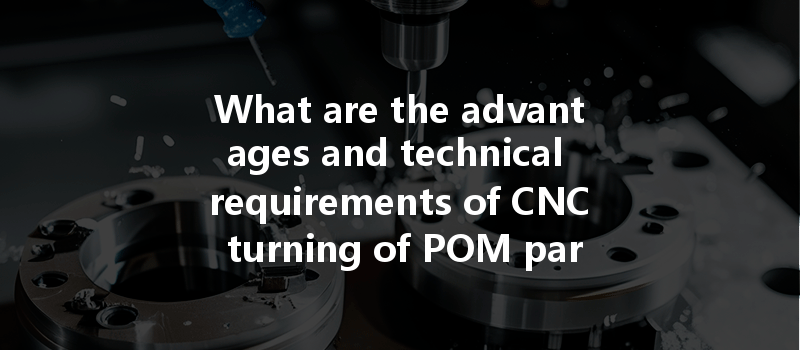Did you know that polyoxymethylene (POM), more commonly known as acetal, is often referred to as “the metal of plastics” due to its excellent mechanical properties and low friction? In industries where precision, durability, and performance are paramount, CNC turning of POM parts offers a multitude of advantages that elevate manufacturing efficiency significantly. As we explore the technical requirements and benefits of CNC turning of POM parts, you’ll discover the core reasons this versatile plastic should be at the forefront of your next manufacturing project.
<li>1.1 What is POM?</li><img title="Cornerstone_d41d8cd9" src='https://yl-machining.com/wp-content/uploads/2024/11/674555f32fa77.jpg' alt='' />
<li>1.2 Key Industries Using POM</li>
<li>2.1 What is CNC Turning?</li>
<li>2.2 Advantages of CNC Turning</li><img title="Cornerstone_d41d8cd9" src='https://yl-machining.com/wp-content/uploads/2024/11/674555f3f37a1.jpg' alt='' />
<li>3.1 Material Considerations</li>
<li>3.2 Equipment Requirements</li>
<li>3.3 Tool Selection and Parameters</li>
<li>3.4 CNC Programming for POM</li>
<li>4.1 Precision and Accuracy</li>
<li>4.2 Cost-effectiveness</li>
<li>4.3 Versatility in Design</li>
<li>4.4 Enhanced Performance Characteristics</li>
<li>5.1 Common Challenges</li>
<li>5.2 Best Practices to Overcome Challenges</li>
—
1.1 What is POM?
Polyoxymethylene (POM) is an engineering thermoplastic known for its rigidity, high strength, and exceptional wear resistance. It exhibits low friction properties, making it an ideal choice for parts that require durability and precision under stress. The incredible balance of these characteristics makes POM a popular material in various applications, from automotive to consumer electronics.
1.2 Key Industries Using POM
POM finds its applications across various industries including:
As we delve deeper into this blog, we will see how CNC turning can enhance the production processes in these sectors by leveraging the unique benefits of POM.
—
2.1 What is CNC Turning?
CNC (Computer Numerical Control) turning utilizes computer software to control machine tools, allowing for highly precise and repeatable cuts on materials. The CNC lathe spins the workpiece while a cutting tool moves along predetermined paths to shape the material to exact specifications. This technology is invaluable for producing parts with intricate designs and tight tolerances.
2.2 Advantages of CNC Turning
The advantages of CNC turning are manifold:
These benefits bode well for the turning of POM parts, further reducing the complexities associated with mass manufacturing.

—
3.1 Material Considerations
When working with POM, manufacturers must keep in mind its specific characteristics:
3.2 Equipment Requirements
To achieve optimal results with CNC turning of POM, specific equipment needs to be in place:
3.3 Tool Selection and Parameters
Choosing the right tools for CNC turning of POM is crucial:
3.4 CNC Programming for POM
Programming is another critical aspect:
—
4.1 Precision and Accuracy
CNC turning allows for meticulous design execution, maintaining consistent quality across all parts. This precision is critical in industries where component reliability is essential, such as automotive and medical.
4.2 Cost-effectiveness
While the initial setup cost for CNC equipment can be significant, the long-term savings in labor and material waste often lead to reduced costs per part.
4.3 Versatility in Design
A significant benefit of CNC turning POM is the ability to produce a wide range of complex shapes. This flexibility allows for creative design solutions without sacrificing material performance.
4.4 Enhanced Performance Characteristics
CNC turned POM parts exhibit enhanced performance characteristics, such as reduced friction and increased wear resistance compared to other materials.
—
5.1 Common Challenges
Despite the many benefits, CNC turning of POM is not without its challenges:
5.2 Best Practices to Overcome Challenges
To mitigate these challenges:
—
CNC turning of POM parts offers significant advantages in manufacturing that can enhance product quality and optimize production processes. From the precision and efficiency of CNC technology to the mechanical resilience of POM, the integration of these elements can propel a manufacturing operation toward success.
In this blog, we have illuminated the many facets of CNC turning and outlined specific technical requirements to achieve the best results. Understanding the nuances of this process not only helps manufacturers harness the full potential of POM but also establishes a pathway to innovative solutions in design and production.
As industries continue to evolve, the importance of advanced manufacturing techniques such as CNC turning is undeniable. Embracing these approaches will enable you to remain competitive in an ever-changing market landscape. Are you ready to harness the power of CNC turning for your next project? The future of manufacturing is at your fingertips, so take a moment to reflect on the insights presented within this blog and consider how they can be applied to your operations.




